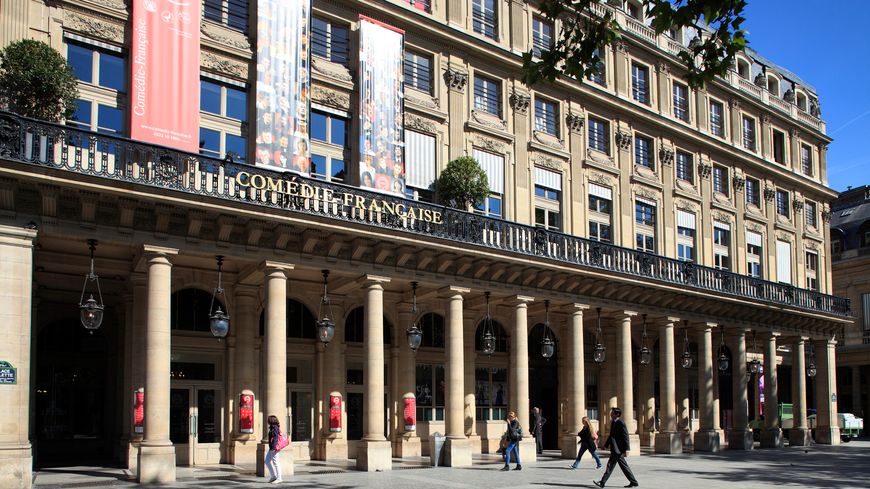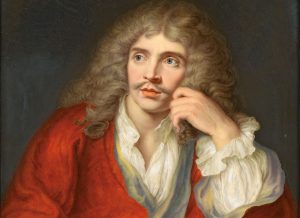Molière was born and died in Paris. 2022 marks 400 years since the birth of French playwright Molière. The special festivities began on the 15th of January, the date on which the writer (real name Jean-Baptiste Poquelin) was baptized in 1622. Even though it has been 400 years, the works of Molière were so modern that they are still capable of resonating with contemporary audiences. More than just a playwright, Molière is regarded as one of the greatest French writers of all time. Known for his farces, he is considered as the creator of French comedy. In fact, Molière is so famous that French is sometimes referred to as “the language of Molière”.
All throughout 2022, France will honor Molière with special plays, performances, exhibitions and symposiums. Read more to find out about the life of Molière as well as the special events taking place around Paris for the special 400th anniversary of France’s most celebrated playwright.
The Comédie Française

The Comédie-Française, the iconic theater located in the Palais-Royal is also called the “Maison de Molière” (the house of Molière). It received this nickname because when the theater was inaugurated by Louis XIV in 1680, the Comédie-Française was created by combining the troupe of Molière (who had died 7 years previously) with the other Parisian acting troupe of the time. To this date he is still the most frequently performed author by the theater group.
Before the Comédie-Française was created, Molière’s troupe performed at the Theatre du Petit Bourbon, which was next to the Louvre Palace. When this theater was torn down in 1661, his company began to perform in the theater located in Palais-Royal.
Molière was also an actor, and he died famously on February 17, 1763 after exiting the stage of the theater at the Palais-Royal. He had been performing in his final play, “The Imaginary Invalid”, in which he acted as Argan, a hypochondriac. During the play, Moliere had a coughing attack and then hemorrhage due to pulmonary tuberculosis. He was able to finish his performance but he died a few hours after.
Centuries later, the actors of the Comédie-Française still consider Molière to be their patron. The actors of the Comédie-Française touch the bust statue of the writer for good luck, and there is a superstition that wearing green brings bad luck to actors as this was the color Molière was wearing when he died.
To mark the 400th anniversary, the Comédie-Française will be performing 20 plays by Molière until July, including the masterpieces “Le Tartuffe ou L’Hypocrite”, “Dom Juan”, and “Le Misanthrope”.
Versailles
Molière found aristocratic patronage at the Court of Louis XIV. He first performed for the King in 1658 in the Louvre Palace on an improvised stage in a guardroom. This play proved to be a success and allowed Molière to gain the patronage of the King’s brother, Philippe the Duke d’Orleans. After seven years, Louis XIV himself became the patron of Molière’s theater group, which was then known as the “Troupe du roi”.
Molière performed the following plays at the Palace of Versailles: “Le Prince Jaloux”, “L’École des Maris”, “Les Fâcheux”, “L’Impromptu de Versailles” and “Le Dépit Amoureux”. In 1664, he organized the famous party in the gardens of Versailles “The Pleasures of the Enchanted Island”. During this time Molière wrote special “comedies-ballets” alongside Jean-Baptiste Lully, the famous composer. These shows combined dance and music with acting. A talented dancer, King Louis XIV even acted in Molière’s comedie-ballets, playing an Egyptian in “Le Mariage Forcé” and Neptune and Apollo in “Les Amants Magnifiques.”
Molière was such an important part of the court of Louis XIV at Versailles that every year for the past 26 years, the city holds a Molière month, dedicated to the art of theater and music. During this festival, free performances are held throughout the city in streets and parks in order to promote theater to everyone.
This year, for the special 400th anniversary of Molière, there will be an exhibition, “Molière, la fabrique d’une gloire nationale”, translated as “Molière, the Making of a National Icon” at the Espace Richaud (78 Boulevard de la Reine, Versailles) until April. The exhibition will feature 200 works from the life and career of Moliere including archives, manuscripts, staging documents, stage set models, sketches, costumes and video projections.
Other Expositions
In Paris, from September 27 until the 15th of January 2023, the exhibition “Molière, le jeu du vrai et du faux” will be at the Richelieu location of the Bibliothèque Nationale de France, located at 58 Rue du Richelieu. During these same dates, the Opera Garnier will be hosting the exhibition “Molière en musiques”
International Events
If you can’t make it to France this year and happen to be in the New York area, New York University and Yale University are hosting the conference, “Decentering Molière” from April 14th to 16th. While in Oxford, UK, the Maison Francaise will be hosting the conference and festival “Molière on Stage” on July 27-28.
Around Paris
If you miss these special 400th anniversary Molière events but are still interested in the writer, check out these Parisian Molière landmarks during your next visit to the city:
1) The Molière Fountain, 28 Rue de Molière
At the intersection of the Rue Richelieu and the Rue de Molière, you will find the special fountain created in 1844, in hommage to Molière. The fountain features two allegorical female figures representing Serious Comedy and Lighthearted Comedy underneath a stature of the writer. The two female figures hold parchment paper which lists all of the works of Molière.
2) Le Pavillon des Singes, 95 Rue Saint-Honoré
Called “The Pavilion of Monkeys”, this was the childhood home of Molière. It is called this because of the decoration of a corner post showing monkeys climbing a tree picking fruit. Molière lived in this home from his birth until 1643. The house was demolished in 1802 but its location was the crossing of the Rue des Vieilles Etuves and Rue Sauval.
It was previously believed that Molière’s childhome was located at 31 Rue du Pont-Neuf, but this has been proven false. Still, at the 31 Rue Pont-Neuf location you will find a bust statue of Molière and with a plaque listing a false date of birth for the writer.
3) The Église Saint-Germain l’Auxerrois
This gothic church is located directly across from the Louvre Museum. It was in this church in 1662 that Molière married Armande Béjart, one of the most famous 17th century actresses, known as “Mademoiselle Molière”.
5) Père Lachaise
At the time of his death, Molière was buried at the Saint-Joseph cemetery. But this cemetery was destroyed and in 1817 the remains and tomb of Molière were transferred to what is now the most famous Parisian cemetery, Père Lachaise.




